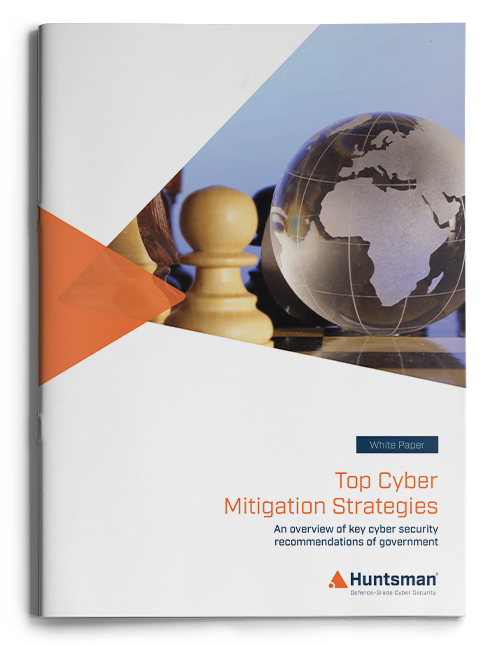Security advisories everywhere are warning of heightened threats in the Critical Infrastructure (CI) sector, and recent world events are unlikely to slow the trend. Off the back of new security agency mandates in the US, planned strengthening of security supervisory and reporting requirements for NIS2 in the EU and the UK government review of the NIS regulations, there are changes afoot to the way security and resilience requirements are enforced in the sector.
Likewise, in Australia, legislation imposing positive security obligations on critical infrastructure sector operators has recently passed into law. As a result, many organisations now have new vulnerability assessment, risk management and reporting responsibilities. These increased governance measures and accountabilities have certainly raised the cyber security bar for operators and their senior executives.
Work to do
Industry experts and observers have expressed concern that many of the CI organisations facing these new or enhanced obligations do not have the necessary robust, resilient or reliable controls in place to meet these changing requirements. In fact, many CI providers have a less than a clear picture of their IT assets and operational risks.
This means that despite these new requirements across the sector, their effectiveness might be less than hoped. Take, for example, systems that are missing from enterprise asset registers – they are excluded from software updates and patching regimes. As a result, they are not configured in accordance with the security policy and so have no backups or resilience. So, not only do they add risk to the organisation, but they are very difficult to replace or restore in the event of failure.
Sector variability
Research from industrial cyber security firm Claroty, has found that the quality of risk assessment, management and reporting is highly variable across the sector; and especially severe in the “less obvious” parts of the critical infrastructure community. Particularly operational technology (OT) and Internet of things (IOT) systems, for example.
Claroty found that while utilities and some larger-scale critical infrastructure providers have visibility of their systems and assets; many do not. Too often industry participants still rely on incomplete or out of date spreadsheets or subjective questionnaires to manage their cyber security assessment, mitigation and reporting efforts.
This poses a problem of how to measure the true security levels by enterprise, or across the whole sector. Systematic cyber risk measurement, assessment and reporting processes are necessary in such a disparate sector to baseline and manage the cyber posture against a recommended framework or standard. What is trivial and obvious for one firm is a major area of failure for others. Simple and accurate risk assessment solutions enable informed and timely cyber security decision-making by all stakeholders.
Getting the basics right
With echoes from management guru Prof Peter Drucker, Claroty notes that:
“You can’t secure what you can’t see. Organisations need to have comprehensive visibility of their assets before they can even think about managing and patching them.”
Australia’s ACSC Essential 8 is an obvious place to start. Checking the effectiveness of eight key technical controls, like the configuration and patching of systems, application controls policies and users accounts with administrative privileges etc. can quickly form the basis of a systematic measurement and management process. Equivalent guidance in the UK from NCSC and in the US NIST on ransomware risks, contain very similar sorts of safeguards.
As an aside, just as Critical Infrastructure organisations have been charged with increasing cyber security obligations, insurers too are seeking greater levels of confidence around the security controls and risk management processes operating in the sector.
“You can’t manage what you can’t measure”
Users of automated security assessment solutions like Huntsman Security’s Essential 8 Auditor and SmartCheck for Ransomware can quickly get a clear view of their IT systems and assets. They can also accurately report and manage their internal cyber posture. This is in stark contrast to qualitative questionnaires and other self assessment techniques that, despite the appearances of graphical presentations to the contrary, struggle to deliver information suitable for risk management purposes. To manage cyber security, or any other risk, objective measurement is required to support evidence-based risk management and effective security efforts.
Identifying large numbers of often overlooked systems that aren’t covered by patch management systems, for example; or numbers of user accounts (including administrative ones) that are not set up in accordance with security policy, requires rigorous measurement. This situation is likely to be even more tricky in environments with large numbers of non-traditional IT and sometimes legacy systems such as OT networks or even those using IoT devices.
Quality data to inform cyber security decision making
For this reason, solutions that provide a systematic measurement of risk to quickly and objectively inform management decisions of changing security circumstances can add significant value to the IT security effort. Effective cyber security risk management ultimately relies on accurate and high-quality risk information otherwise you’re simply jumping at shadows.
It’s not to say that patching and configuration of OT systems is easy. It’s more difficult than most IT environments, but by ensuring that the “low-hanging fruit” or vulnerabilities within your traditional IT environment are identified and mitigated the avenues for attack and extent of the enterprise attack surface can certainly be limited. An intrusion that starts with a conventional user on a conventional desktop, can even be eliminated before it spreads across to the OT and wider critical infrastructure environment.
With legislative changes and tightening regulations, an increasing number of organisations are seeking greater visibility of the risks that threaten their systems and internal assets. This, plus the ongoing demands for greater frequency and accuracy of these assessments means that smarter, faster, quantitative technologies will be sought to access the information necessary to support the ongoing improvement of risk management and posture reporting efforts.
 About Huntsman
About Huntsman


